| Botanical Name |
|
| Family |
Apocynaceae - The Oleander or Dogbane family. |
| Pronunciation |
kar-ISS-uh ma-kro-CAR-pah |
| Common Name(s) |
English: Natal plum; Big num-num
Afrikaans: Grootnoem-noem
|
| Plant Group |
- Shrub A woody plant of relatively low height, having several stems arising from the base and lacking a single trunk; a bush.
|
| Plant Size |
- Medium to Large
| Tree | 15m to 20m |
| Shrub | 2m to 3m |
| Perennial/ground cover | 60cm to 75cm |
| Bulb | 60cm to 1m |
| Succulent | 60cm to 1m |
|
| Position |
- Canopy Shade Canopy shade is found below closely grown trees where some light filters through. Ideal for the protection of herbaceous plants.
- Dry Shade Shady areas where soil has poor water retention or are dependent on rain for their moisture needs.
- Light or Dappled Shade Found below trees with sparse, open foliage. Ideal for the protection of herbaceous plants.
- Partial Shade The area is in shade for part of the day and in full sun for part of the day.
- Sun The area is in full sun for all or most of the day, all year round.
|
| General Information |
- Attractive fruits, berries or seeds Brightly coloured fruits or berries increase and extend the visual impact of the plant and are especially attractive to birds and other small wildlife.
- Drought Tolerance: High The plant is well adapted to arid conditions; it can survive long periods of drought and high temperatures without extra water.
- Evergreen Plants that have leaves all year round.
- Fragrant / Aromatic These plants posses a strong, usually pleasant odour.
- Frost: Tender A plant that will not survive any frost or low winter temperatures.
- Salt spray tolerant A plant with specific adaptations enabling it to grow in a saline environment.
- Sand tolerant Plants adapted to survive in nutrient poor, very sandy soils.
- Water Wise Plant species originating from low rainfall regions that require less water to survive and thrive than other plant species.
- Wind Tolerant Plants able to withstand the effect of strong winds.
|
| Specific Information |
With its numerous, sweetly scented flowers, attractive shiny green leaves and oval red fruits, Carissa macrocarpa is ornamental all year round and is a must for seaside and coastal gardens. It forms a dense shrub or small tree and responds well to shaping. A non-poisonous, milky sap oozes from all parts of the plant when cut. The thorny nature of Carissa macrocarpa makes it ideal for barrier planting.
|
| Ad Break |
|
| Flowers |
| Description |
Star-shaped with five petals.
|
| Season |
- Spring to Summer Plants will seldom bloom for the entire season as given in the list, but should flower during a period within these parameters.
|
| Colour |
|
| Growth Rate |
- Fast Specifying growth rate can be very misleading as there is considerable variation of growth rate depending on type and species of plant, available water, supplementary feeding, mulching and general care, as well as the plants suitability and adaptability to the garden environment.
|
| Plant Uses |
- Attracts bees, butterflies or other insects This plant attracts insects which can be food for birds or other creatures in your garden.
- Attracts Birds This plant will attract birds.
- Barrier Plant A very thorny shrub, tree or scrambler that can be used to create an impenetrable barrier.
- Border A strip of ground, at the edge of a driveway or path in which ornamental plants or shrubs are planted.
- Boundary A plant useful for planting around the edges of the property to form a green or colourful backdrop, an impenetrable hedge, to hide walls or create privacy.
- Filler Either a fast growing tree or shrub used temporarily to fill in an area while the permanent plants grow to a desired size, or a plant used to fill gaps in borders or beds.
- Hedge Suitable trees or shrubs planted relatively close together so that the branches intertwine to create a barrier. This can be formal – the plants are regularly trimmed to produce a neat shape, or informal – the plants are left to themselves to create a natural hedgerow.
- Suitable for coastal gardens Plants adapted to dry, sandy soil, forceful wind, limited rainfall and intense sunlight.
- Suitable for seaside gardens Plants that will survive the hostile environment of harsh salty winds, dry sandy soil, irregular rainfall and heat found in seaside gardens.
- Wild Garden An indigenous garden planted for the benefit of wildlife and birds. Provides food, water, a variety of mini-biomes and no poisonous chemicals are used.
|
| Distribution and Habitat |
from Humansdorp in the Eastern Cape to Kwazulu-Natal and north into Mozambique, in coastal bush and forests, and on sand dunes.
|
| Planting Suggestions |
Plant in full sun to semi-shade in good garden soil, enriched with compost. Carissa macrocarpa responds well to pruning. Plant bushes one meter apart to form a dense, impenetrable hedge.
|
| Medicinal Uses |
The fruit gives a pink dye. The fruits are edible, tasty and highly nutritious, being rich in Vitamin C, magnesium and phosphorus. They can be eaten raw or be made into delicious jams or jellies.
|
| Ad Break |
|


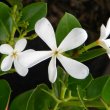
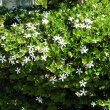
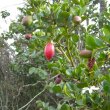
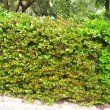
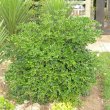
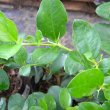
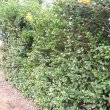
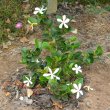
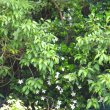


Comments
Amatungulu
Hi there,
Please tell me if Amatungulu plants are fast growing plants and where we can buy them in bulk (approx. 400 plants), and what we can expect to pay. The larger the plant the better.
Thank you!
Regards
Ellen Price
Carissa macrocarpa availability
Hi Ellen
I am afraid I can be of little help in your search as I have no idea of the area in which you live. As mentioned above, this plant is fast growing but this would be within its natural distribution area and under favourable climatic conditions such as rainfall, water availability, quality of soil and so on.
To source a supplier Google:
Wholesale indigenous nursery, and the province in which you live.
You can then check whether the plant is available in the quantity you require as well as the size and cost. (Include GST and transport costs as these can raise the basic wholesale cost of the plants up another 30 or 40%) You may have to go through a retail nursery as many wholesalers will not deal with the general public.
If you fail to get results from your search, let me know where you are situated, and I will see if I can help you further.
Kind regards
Lorraine
Hedges in Cape Town
Good morning.
I hope you can help me.
Being new to Cape Town, I am now looking for a plant that will form a Low hedge wall (Palisade sections incorporated). The idea is mainly to act as a feature to break the harschness of the wall without enclosing palisade panels completely. secondary function is to deter people from attempting to climb over palisade, ie I would need somekind of thorny bush..
Can you please advise on such a plant?
Thorny hedge
Hi Andre
Carissa macrocarpa would be my choice. It has all the positives: savage thorns, pretty flowers with a lovely perfume, evergreen with bright, shiny green leaves, can be pruned hard as a formal hedge or lightly pruned for a more natural look, has edible fruits, is water wise, drought resistant and non-toxic. Carissa can be grown in winter rainfall areas as is evident by its extensive use in California.
I know of no other indigenous plant that has all these qualities.
Kind regards
Lorraine
Carissa Macrocarpa planting advice...
Thank you for the reply!
Now follow up... How Do I plant Carissa macrocarpa? Read somewhere you can use cuttings?
Any special prep I need to do for soil? Seeing that we have effectively Hydrophobic soil (ie sea sand texture that captures air bubbles and the water runs off almost like ground has a fatty layer?)
Planting Carissa macrocarpa
Hi Andre
Cuttings: it does grow from cuttings but my own experience with this has been very disappointing. It took ages to root and only about 30% of what I planted actually rooted. The resulting plants were of poor quality and did not thrive. (Maybe I did something wrong?!) Planting from seed is a much better proposition but for speed it would be best to buy young plants.
For the soil you describe you will need to mix in as much compost as you can afford. I also have this problem and only gentle soaking rain has any chance of penetrating so that all the soil is wet, without dry patches under the ground. Apart from compost, spread a thick layer of mulch (10 cm) about a meter around the plants after planting and keep replacing the mulch as it thins out. Keep a small space around the stem clear of mulch to prevent disease. I have had excellent results this way. Over time, as the compost and mulch do their work, the soil structure will show a vast improvement. Occasional applications of slow release organic fertiliser will also help speed up growth.
The hedge in picture 4 above is growing a couple of hundred meters from the beach in nutrient poor, hydrophobic soil. The plant is healthy but growth is a little slow.
I am aware that this seems like a lot of work and expense, but for a long term, permanent project such as this it is best to start the plants off in the best possible conditions. (Read the following for more info on mulch: http://kumbulanursery.co.za/blog/lazy-gardening-for-the-future-much-more...)
I suspect your next question will be: Where can I buy the plants? I will email this information shortly.
Kind regards
Lorraine
Transplanting Carissa Macrocarpa
Hello there, we have a number of fairly large specimens growing (in the wrong place) and are wanting to transplant them. We live in Cape Town Southern Peninsula.
Please can you advise best way to do this and if this is possible, without killing the poor plants.
Many thanks
Transplanting mature Carissa macrocarpa
Hi Alison
I have had no experience in uprooting and transplanting large specimens of Carissa. My instincts are that this might not be an easy plant to move and survival would be questionable.
The only experience I have had in this area has been with rooted cuttings of Carissa taken from around the base of a mother plant and I failed dismally at this - only two out of ten cuttings survived. The two that did survive did not thrive at all and eventually landed on the compost heap.
The following site is the best I have found with a video and instructions for transplanting an established shrub. I imagine the job will be complicated by the strong and vicious thorns with which the shrubs are armed:
http://www.thisoldhouse.com/toh/video/0,,1638796,00.html
Hopefully another reader could make further suggestion or assurances.
Kind regards
Lorraine
Thanks so much Lorraine -
Thanks so much Lorraine - here's hoping we succeed :)
Any success with transplanting?
Have you had success with the transplanting? I am planning on transplanting some of my larger noem noems. My previous attempts were unsuccessful.
Hedges for Semi Shade in Cape Town
Hi Lorraine
We are looking for a fast growing hedge for a semi shade/ Canopy shade area. We live in Newlands Cape Town. The hedge would need to reach about 2-3 m. We like the idea of the Carissa Marcrocarpa but not sure if it will reach the required height.
Many thanks
Hedge for semi-shade
Hi Pepe
Carissa macrocarpa will grow quite tall over time. Take a look at the informal hedge in picture 7 where you can compare the height of the hedge with the height of the wooden fence next to it, which is around a meter tall. Admittedly it will take quite a few years to reach this size but with regular feeding, a thick layer of mulch applied each year after the winter rains and sufficient water during summer, you will be able to speed up the growth process. If you want a more formal, narrower hedge, as in picture 4, start the pruning process while the plants are still quite young, allowing a bit more growth to remain on the top than on the sides.
Kind regards
Lorraine
Your description of this
Your description of this plant says a non-poisonous sap is released from this plant when cut. All other research on this plant I have done describes the sap as poisonous. Please advise.
Carissa macrocarpa does not have poisonous sap
Hi Paul
My sincere apologies for not having replied to your query long ago.
I have often wondered if I would ever get challenged on this, so here goes:
Let me deal initially with the facts.
First:
The South African National Biodiversity Institute has a site called Plantzafrica. At this site the plants of South Africa are dealt with individually by experts in their field. Plantzafrica is the 'go to' for accurate information about South African indigenous plants. On the page for Carissa macrocarpa (http://www.plantzafrica.com/plantcd/carismac.htm), the following statement is made: 'all parts of the plant exude a white, milky, non-toxic latex'.
Second:
Poisonous plants in South Africa are well documented by our African populations. Sangomas and other indigenous medical practitioners have a deep knowledge of our plants, their uses and their toxicity. According to widely documented reports about medicinal uses of plants, there is no reference to Carissa as being in any way toxic.
Third:
Poisonous plants are well documented in South Africa for and by the farming community as this is vital to the health of their stock animals. There a number of sites listing the poisonous plants of South Africa. Carissa macrocarpa is not listed.
So where did this myth arise?
I first came across this disinformation in an American site and on further research, it appears that all the plant and nursery sites from the USA list Carissa as having highly poisonous sap.
Theory 1
The genus Carissa belongs to the Dogbane family (Apocynaceae) and some of the plants in this family are poisonous. Perhaps the assumption was made from this.
Theory 2
The sticky, white sap of many plants is poisonous. Most members of the Euphorbia family, for example, have sticky, white sap which is poisonous. Perhaps the jump was made that sticky, white sap from any plant was automatically poisonous.
The Wikipedia article about Carissa macrocarpa (https://en.wikipedia.org/wiki/Carissa_macrocarpa) states that 'The California Poison Control System rates the plant as mildly toxic.'
Which it isn't.
In closing, having read many plant and nursery sites originating from the USA in this connection, it appears that the wording on many of the sites is identical, implying that little actual research was done and one site copies from another site, ad infinitum.
If, in your research, you have come across a South African website stating that the plant is poisonous, you can be sure they did their research from an American source. If you have found any such, please supply me with the web addresses.
As you may have discerned, this is one of my pet peeves. I will be copying this post to my Blog sometime.
I hope this has cleared up any confusion.
Kind regards
Lorraine
Discuss this plant
Share knowledge, ask a question or give an experience.